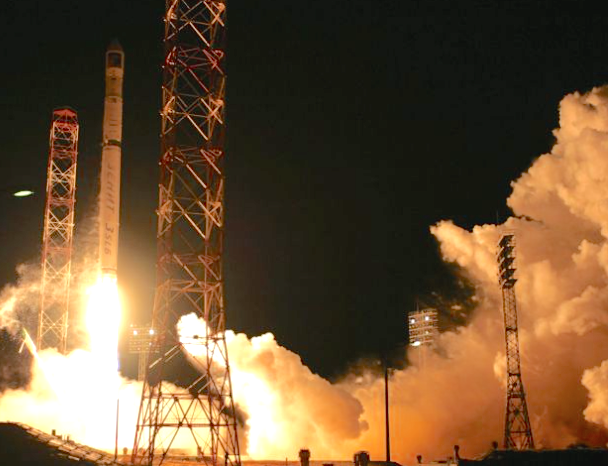 .
.
Prior ZT http://www.zetatalk.com/transfor/t51.htm
But as [Planet X] approaches and magnetic confusion increases, these satellites will begin to mis-perform. Satellites use magnets for alignment of their internal mechanisms, and if pointing in wrong directions, communications are halted. What good is a message intended for the Earth's surface when it is sent into outer space?
Prior ZT http://www.zetatalk2.com/index/zeta511.htm
We have mentioned that man should anticipate satellite failure due to the charged tail of Planet X and the debris in this tail, and also mentioned that man should anticipate problems with GPS due to the Earth wobble, which puts these satellites increasingly out of synch with their anticipated spot over the globe.
.
Prior ZT http://www.zetatalk.com/index/zeta496.htm
We have mentioned that satellites will increasingly fail, and this has been happening but has been hidden from the public.
.
Envisat services interrupted (April 12)
After 10 years of service, Envisat has stopped sending data to Earth. ESA’s mission control is working to re-establish contact with the satellite....
The first sign that there was a problem came on 8 April when contact with the satellite was unexpectedly lost, preventing the reception of any data as it passed over the Kiruna ground station in Sweden...
ESA’s mission control team declared a spacecraft emergency and immediately called for support from additional ESA tracking stations around the world. A team of operations and flight dynamics specialists and engineers was quickly assembled.
In a concerted effort, the recovery team, which included experts from industry, spent the next days trying to re-establish communications with the satellite.
While it is known that Envisat remains in a stable orbit around Earth, efforts to resume contact with the satellite have, so far, not been successful.
As is standard practice, an anomaly review board is investigating the cause for the break in communications.... Source
.
Huge, Mysteriously Silent Satellite Spotted by Another Spacecraft (April 15)
 A massive European satellite the size of a school bus that has mysteriously stopped communicating with Earth has been spotted by another satellite in orbit.
A massive European satellite the size of a school bus that has mysteriously stopped communicating with Earth has been spotted by another satellite in orbit.
On 15 April, the French space agency CNES rotated the Pleiades Earth observation satellite to capture this image of Envisat. At a distance of about 100 km, Envisat’s main body, solar panel and radar antenna were visible.
The giant Envisat satellite, which is the world's largest imaging satellite for civilian use, was photographed in stunning detail by a French spacecraft that is also designed to snap high-resolution images of Earth, officials with the European Space Agency (ESA) said Frida... Source
Investigation on Envisat continues (April 20)
Optical, radar and laser observations of the Envisat satellite show that it is still in a stable orbit. Efforts to regain contact with the satellite have been under way since 8 April, when it unexpectedly stopped sending data to Earth.
To determine if Envisat has entered its ‘safe mode’ – which would be a starting point for revival – the recovery team is drawing on every information source available... Source
.
Researchers Unable to Revive Europe's Envisat (April 23)
Things are not looking good for Europe's flagship Earth observation satellite Envisat. Ground controllers lost contact with the craft on 8 April and so far have been unable to re-establish contact. Envisat, the largest ever civilian Earth observing satellite, carries a battery of sensors for scanning land, sea, and atmosphere, and has been the mainstay of European environmental researchers for the past 10 years.
Following the loss of contact, controllers have aimed a laser at retroreflectors on the craft and found that it is still in a stable orbit and not spinning; that rules out a collision. Images from a ground-based radar show that the craft's own radar antenna and solar array are both intact. On 15 April, the French Space Agency spun round its recently-launched Pleiades Earth observation satellite to point upward and snap an even more detailed picture of Envisat from just 100 kilometers away. This again showed no sign of damage and gave no clues to what is wrong.
The European Space Agency (ESA) had hoped that Envisat would last another couple of years until it launches its next-generation Sentinel satellites, starting next year...
SourceSOZT
Why did the giant Evisat satellite fall silent? The satellite has been viewed by other satellites, and no sign of damage from collision, nor a spin (which would also indicate a collision) is apparent. Evisat is unresponsive to all attempts at communication, and all attempts to restart it, a type of rebooting of the computer programs, have failed. When we predicted, early in the ZetaTalk saga, that there would be increasing satellite failure, we alluded to debris in the tail of Planet X but ALSO to the charged nature of the tail and magnetic confusion swamping satellites which use magnets for alignment of their internal mechanisms.
Man is used to relying upon electricity and magnetism, and has built his technology around these particle flows which in the main are stable because the Earth is stable. Then comes Nibiru, aka Planet X, with its immense magnetic field many times stronger than Earth and its vast charged tail. There is no question that Planet X has been interfering with Earth’s magnetic field, as anyone following the Magnetic Simulator as the folks on the Pole Shift ning have been doing can see. What does this do to sensitive satellite mechanisms? Ruined, and unlikely to be recovered, and only just the start of such premature death in satellites.
EOZT

You need to be a member of Earth Changes and the Pole Shift to add comments!
Join Earth Changes and the Pole Shift